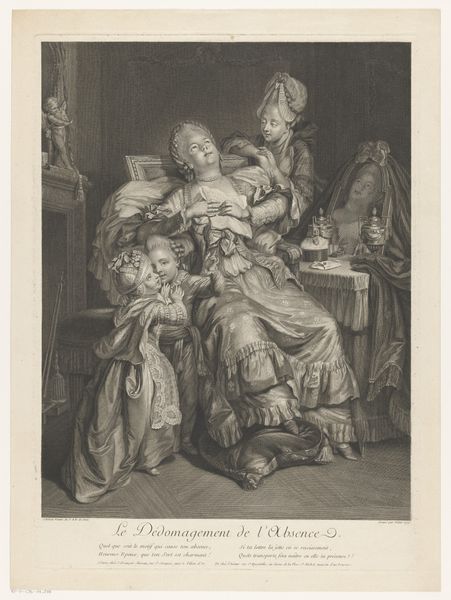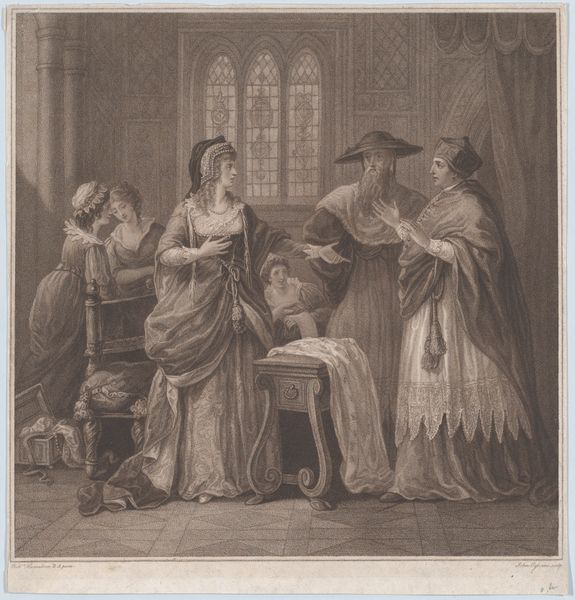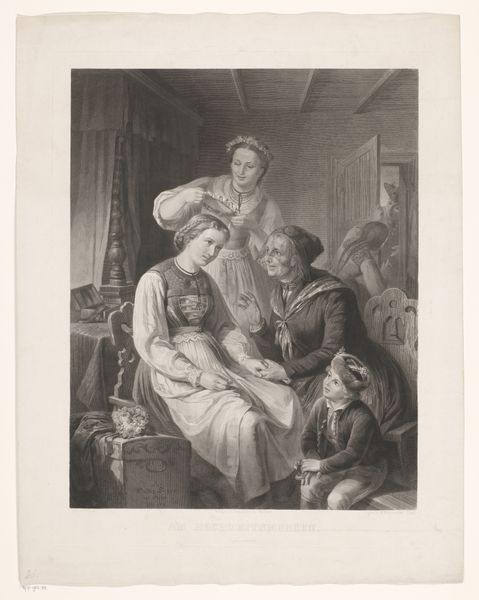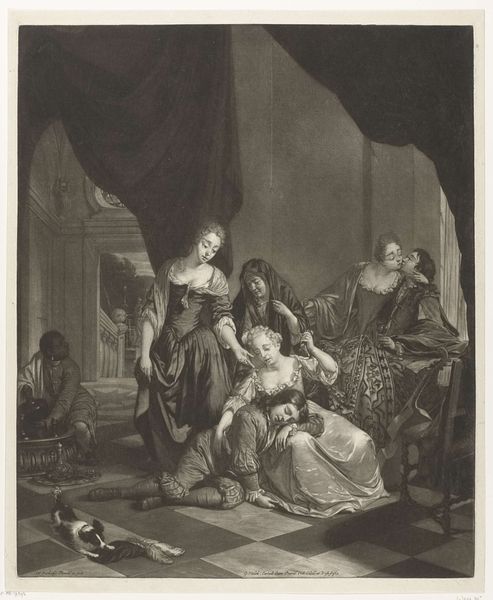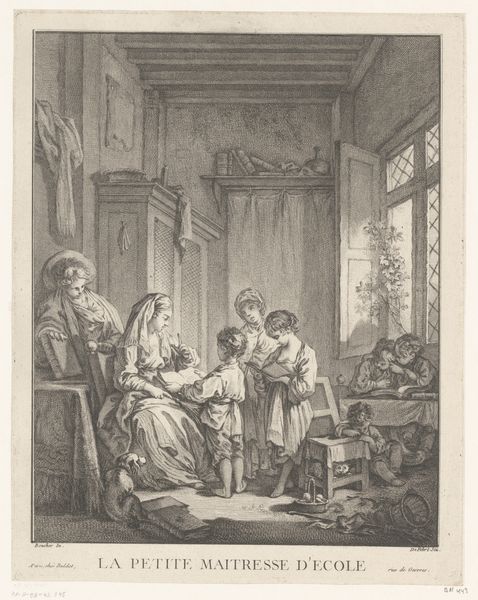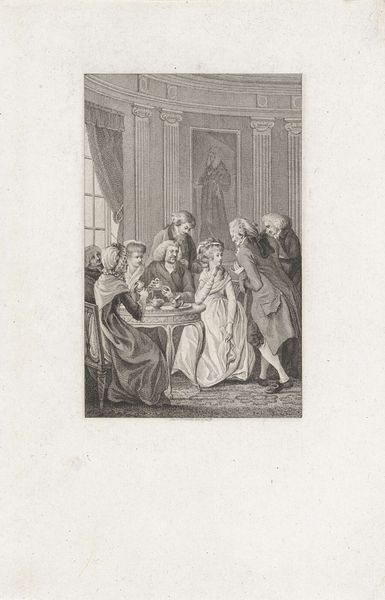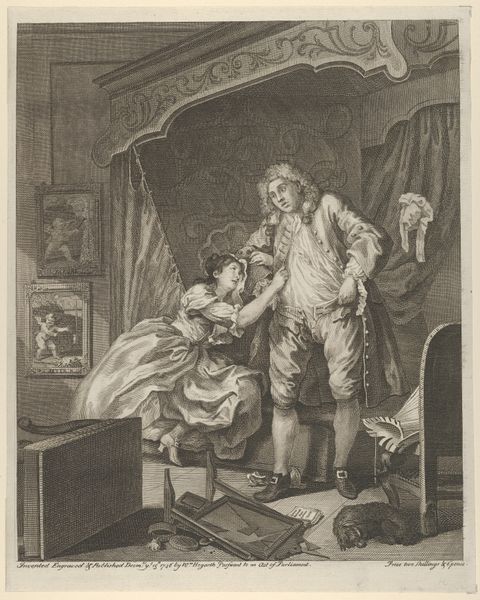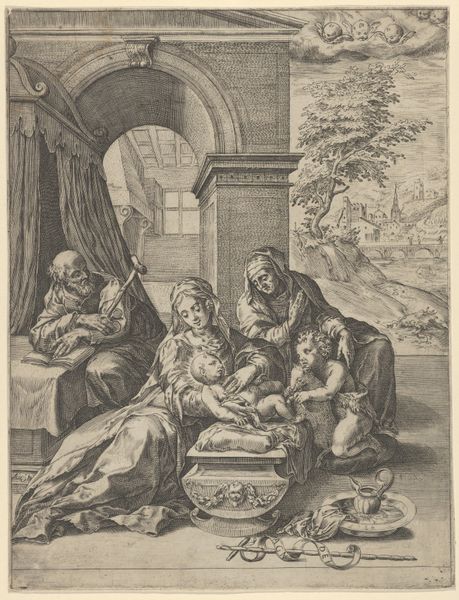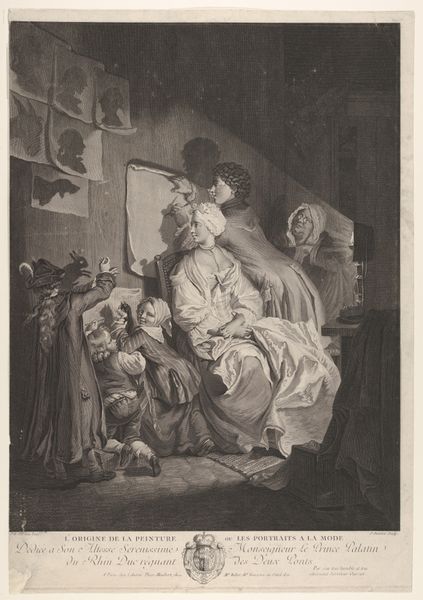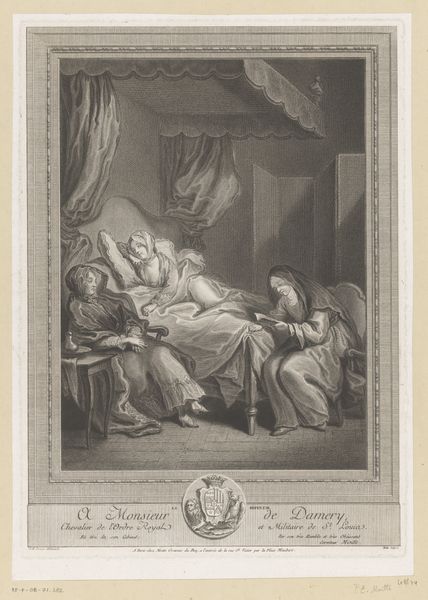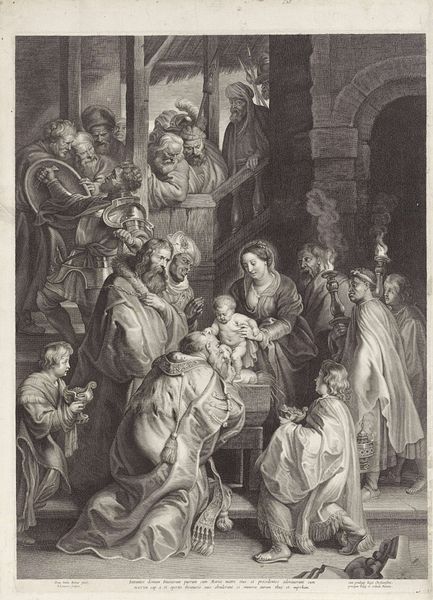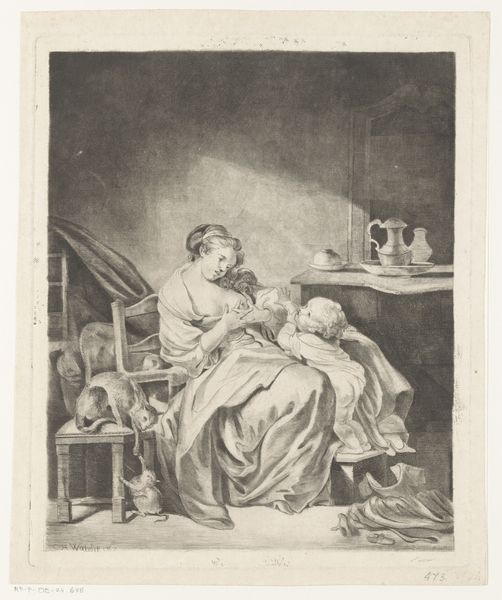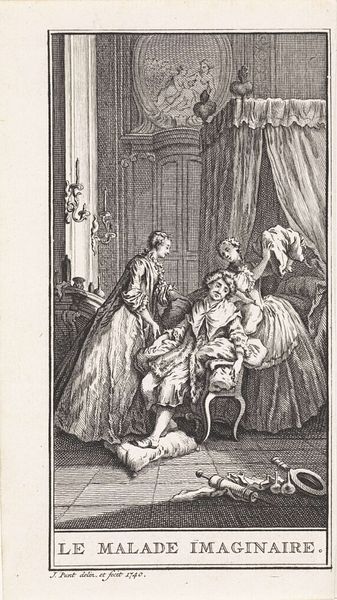
drawing, print, engraving
portrait
drawing
girl
baroque
old engraving style
men
portrait drawing
genre-painting
engraving
Dimensions: sheet: 14 11/16 x 10 1/2 in. (37.3 x 26.6 cm)
Copyright: Public Domain
Editor: So here we have "Luncheon," an engraving by Bernard Lepicié, dating somewhere between 1698 and 1755. It’s currently housed in the Metropolitan Museum of Art. The scene depicts what looks like a well-to-do family enjoying a meal. There's something very intimate and domestic about it. What do you see in this piece? Curator: What strikes me immediately is the portrayal of leisure within a specific social context. Engravings like this weren't just decorative; they were active participants in constructing and disseminating ideas about social status, family life, and even consumerism. Look at the careful attention to detail in the clothing, the furnishings, and even the way the figures interact. How might these details reflect the values of the rising bourgeoisie in the 18th century? Editor: Well, the ornate mirror, the fine clothing – it all speaks to wealth, right? A comfortable domestic scene, perhaps intended to project an image of prosperity. Curator: Precisely! But consider this further: how did the *production* and *circulation* of prints like this reinforce class distinctions? This image wouldn’t have been accessible to everyone. It was circulated among a specific demographic. Think about who could afford it and what kind of messages it conveyed about proper domestic life to those consumers. How might the accessibility to the image relate to a certain privilege of consumption? Editor: So, the image itself becomes a tool for maintaining social order by visually reinforcing ideals only available to a certain class of people. It's more than just a pretty picture then; it's a socio-political statement! Curator: Exactly. And engravings like these also shaped the public's understanding of artists themselves and helped bolster certain forms of "taste" at the time. It highlights how art can serve as both a reflection and a powerful shaper of societal values. Editor: That gives me a lot to think about. I'll never look at these genre scenes the same way again. Thanks for your perspective!
Comments
No comments
Be the first to comment and join the conversation on the ultimate creative platform.
